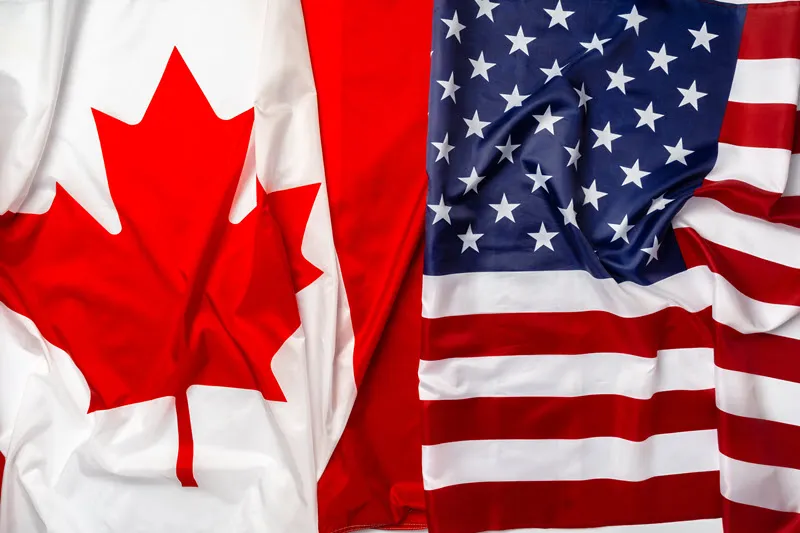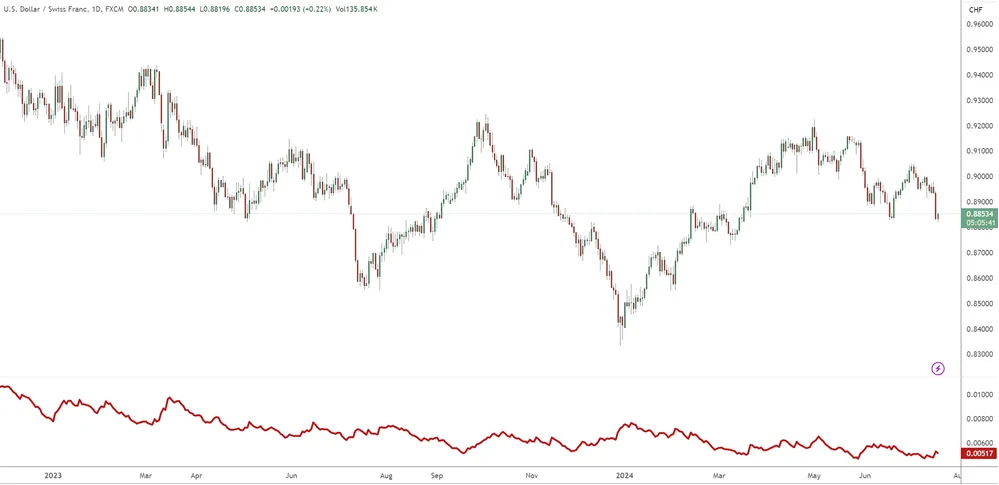Did you know that 17% of all forex trades happen during the New York session? This session is a key player in the global currency market. It’s the last big trading session of the day, making a big impact on forex pairs.
The New York session starts at 8:00 AM local time. It overlaps with the European session, making liquidity very high. This offers traders great chances to make money from USD pairs and other currency pairs.

Knowing how to trade during New York hours is key to doing well in forex. The EUR/USD is very active, and the AUD/USD is influenced by commodities. Each pair has its way of reacting to US economic news.
Key Takeaways
- New York session accounts for 17% of daily forex transactions
- The session runs from 8:00 AM to 5:00 PM New York time
- Overlap with the European session creates high liquidity
- USD pairs are most active during this period
- Economic data releases can trigger significant market moves
Understanding the New York Forex Session
The New York forex session is key for traders around the world. It’s when high activity happens with USD pairs and other major currencies. Let’s dive into what makes this trading time so special.
Timing and Characteristics
The New York session goes from 8:00 AM to 5:00 PM Eastern Time. During this time, USD pairs see big price changes. Traders look to make the most of the New York session’s forex pairs.
Overlap with European Session
The New York session overlaps with the European trading hours. This overlap means more liquidity and trading chances. From 8:00 AM to 12:00 PM ET, both markets are busy, making major currency pairs more volatile.
Importance of US Economic Data
US economic data is important to be aware of during the New York session. Things like GDP reports, job numbers, and Federal Reserve decisions can move the markets.
| Time (ET) | Event | Impact on USD Pairs |
|---|---|---|
| 8:30 AM | Non-Farm Payrolls | High |
| 10:00 AM | ISM Manufacturing PMI | Medium |
| 2:00 PM | FOMC Statement | Very High |
Knowing the New York forex session well can help you trade better. Focus on the right USD pairs and watch for economic news. This way, you can grab the unique chances this session offers.
New York Session Forex Pairs: Top Choices for Traders
The New York session is a prime time for forex traders. It’s filled with currency pairs that can lead to trading success. Let’s look at the top choices that could improve your trading.
EUR/USD is the top pair, popular for its high liquidity and volatility. The GBP/USD, also known as “The Cable,” is another big player during New York hours.
USD/JPY picks up pace as US markets open. This pair reacts to economic news from both countries. USD/CAD gets busy due to the strong economic ties between the US and Canada. USD/CHF completes the list of major pairs active in this session.
| Currency Pair | Average Daily Range (pips) | Best Trading Hours (EST) |
|---|---|---|
| EUR/USD | 80-100 | 8:00 AM – 12:00 PM |
| GBP/USD | 90-110 | 8:00 AM – 11:00 AM |
| USD/JPY | 60-80 | 9:00 AM – 2:00 PM |
| USD/CAD | 70-90 | 8:30 AM – 3:00 PM |
| USD/CHF | 50-70 | 8:00 AM – 12:00 PM |
While these pairs have great potential, always be careful with your risk. Keep up with US economic news as it affects these currency movements during the New York session.
EUR/USD: The King of Forex Pairs
EUR/USD trading leads the forex market, becoming the most traded currency pair. It’s especially active during the New York session, offering unmatched liquidity. Let’s explore why EUR/USD is a favorite among traders.
High Liquidity and Volatility
The EUR/USD pair is known for its liquidity, making trading easier due to tighter spreads and lower costs for traders. Its volatility also means more chances to make money, especially when economic news comes out.
Factors Influencing EUR/USD Movement
Several things affect EUR/USD prices:
- Economic indicators from the US and Eurozone
- Interest rate decisions by the Federal Reserve and European Central Bank
- Political events in both regions
- Global risk sentiment
Trading Strategies for EUR/USD
There are many strategies for making the most of EUR/USD’s volatility:
| Strategy | Description | Best Used When |
|---|---|---|
| Trend Following | Ride strong price movements | Clear market direction |
| Range Trading | Buy low, sell high within a range | Sideways market |
| News Trading | Capitalize on economic releases | High-impact news events |
Understanding EUR/USD trading will help you handle the market’s most liquid currency pair during the New York session.
GBP/USD: The Cable’s Performance in New York
The GBP/USD pair, known as “The Cable,” is very active in the New York session. This pair is popular in the forex market because of the overlap with London trading hours.
During this overlap, the GBP/USD pair often sees quite a bit of movement you can trade. The economic links between the UK and the US cause big price changes throughout the overlap.
The New York session has special benefits for GBP/USD traders:
- Extended trading window due to London-New York overlap
- Higher liquidity makes it easier to get in and out of positions
- Greater volatility, offering more chances to trade
- Increased sensitivity to US economic data releases
To do well in GBP/USD trading, keep up with economic news from both countries. Watch for interest rate changes, GDP reports, and job data. These things can affect the GBP/USD during the New York session.
| Session Feature | Impact on GBP/USD |
|---|---|
| London-New York Overlap | Increased trading volume and volatility |
| US Economic Data Releases | Sharp price movements and trend shifts |
| Risk Sentiment | Influences safe-haven flows between GBP and USD |
Understanding these factors helps you make better strategies for the New York session. Always do your market analysis and keep up with trends for better trading opportunities.
USD/JPY: Yen Dynamics During US Trading Hours
USD/JPY trading is another good pair during the New York session. This pair shows how two big economies work together. We’ll look at what affects USD/JPY and how to manage risks in forex.
Impact of US-Japan Economic Relations
The US and Japan have strong economic ties that affect USD/JPY. Things like trade balances and interest rates can cause big price changes. Keep an eye on economic news from both countries to take advantage of market moves that are driven by the latest data releases.
Risk Sentiment and USD/JPY Movement
USD/JPY shows how risky people feel around the world. When things are uncertain, people might choose the yen as a safe option (risk-off). But when things look good (risk on), the yen might get weaker. Watching global events and how people feel is important for trading USD/JPY.
Technical Analysis Considerations

Technical analysis is key for USD/JPY trading. Things like chart patterns and support levels help make sense of the price movements. Here are some important technical indicators for USD/JPY:
| Indicator | Usage | Interpretation |
|---|---|---|
| Moving Averages | Trend identification | Crossovers signal potential trend changes |
| RSI | Overbought/Oversold conditions | Extreme readings may indicate reversal points |
| Fibonacci Retracements | Support/Resistance levels | Key levels for potential reversals or continuations |
By using economic analysis, risk sentiment, and technical analysis, you can trade USD/JPY better. Always use good forex risk management to keep your money safe and make the most of your trades.
USD/CAD: North American Neighbors in Focus
USD/CAD trading is a big deal during the New York session. It shows the economic bond between the United States and Canada. The North American forex market gets busier as both countries share important data.

The economic links between these neighbors move USD/CAD prices. A strong US economy usually helps the Canadian economy too. This close relationship means traders can find trading opportunities that capitalize on the movements of both currencies. They look at economic news from both countries to predict price changes.
Commodity prices, especially oil, are a big driver for USD/CAD trading. Canada depends a lot on oil exports. When oil prices go up, the Canadian dollar gets stronger against the US dollar (generally). This link gives traders useful information on the short-term trend direction of the pair.
| Factor | Impact on USD/CAD |
|---|---|
| US Economic Data | Directly affects pair’s value |
| Canadian Economic Data | Influences CAD strength |
| Oil Prices | Higher prices often strengthen CAD |
| Trade Relations | Impacts both currencies |
To do well in USD/CAD trading, keep up with both economies. Watch oil market trends and key economic indicators. This info will help you move through the North American forex market with confidence.
AUD/USD and NZD/USD: Commodity Currencies in Play
The New York session is a key time for trading AUD/USD and NZD/USD. These currency pairs are special because they’re tied to global markets and economic links between the US and Oceania.
Influence of Commodity Prices
AUD/USD and NZD/USD are closely tied to commodity prices. Australia exports iron ore and coal, while New Zealand sends out dairy products. When commodity prices go up, these currencies often get stronger against the US dollar.
Economic Ties Between the US and Oceania
The economic bonds between the US and Australia/New Zealand are key for these currency pairs. Trade deals, interest rate differences, and growth rates in these countries affect AUD/USD and NZD/USD during the New York session.
Trading Opportunities and Risks
Trading AUD/USD and NZD/USD can be rewarding but also risky. These pairs can be more volatile when US economic data comes out. To do well, keep up with commodity market trends and economic news from the US and Oceania.
- Monitor commodity price movements
- Keep an eye on US economic releases
- Stay updated on Australian and New Zealand economic news
- Use proper risk management strategies
Understanding what drives AUD/USD and NZD/USD can help you make better trading choices during the New York session.
USD/CHF: Swiss Franc’s Role in the New York Session

USD/CHF trading is key in the New York session, offering chances for forex traders. The Swiss Franc is known for its stability. It plays a big part in shaping forex market trends.
USD/CHF is a pair of safe-haven currencies. When the world feels uncertain, both the US Dollar and Swiss Franc usually get stronger. This creates interesting chances for traders because of the movement that this pair has..
In the New York session, USD/CHF can see more ups and downs because of US economic news. Traders should watch key data like GDP, job numbers, and what the Federal Reserve says.
USD/CHF Trading Strategies
- Keep an eye on how risk feels in global markets
- Watch US economic indicators
- Look for actions by the Swiss National Bank
- Use technical analysis to spot important support and resistance levels
Knowing how USD and CHF relate can give you insights into the forex market. Both currencies are seen as safe, so their moves often show changes in global risk appetite.
| Factor | Impact on USD/CHF |
|---|---|
| Increased global risk | Potential USD/CHF decline |
| Strong US economic data | Likely USD/CHF rise |
| SNB intervention | Possible sharp CHF movements |
By knowing these factors, you can make better choices in your USD/CHF trading strategy during the New York session.
Cross Pairs: Beyond USD-Based Trading
The New York forex session isn’t just about USD-based pairs. Cross pairs offer unique opportunities for savvy traders. These currency combinations can show increased market volatility, especially during the overlap between European and New York trading hours.
EUR/GBP and EUR/JPY Opportunities
EUR/GBP and EUR/JPY are two cross pairs worth watching. They often react to economic news from both Europe and the UK or Japan. This creates interesting forex cross-pair trading scenarios. You might spot trends that aren’t visible in USD-based pairs.
GBP/JPY: The Dragon’s Volatility
GBP/JPY, nicknamed “The Dragon,” is known for its wild price swings. This pair can offer big rewards, but it comes with high risks. It’s influenced by events in the UK, Japan, and global risk sentiment. Keep an eye on currency pair correlations to understand their movements better.
Other Notable Cross Pairs
Don’t overlook pairs like EUR/CAD or AUD/NZD. These can provide trading opportunities based on regional economic differences. By understanding these relationships, you can diversify your trading strategy and potentially find profitable moves others might miss.
FAQ
When does the New York forex session take place?
The New York forex session is from 8:00 AM to 5:00 PM Eastern Time (ET). This is 13:00 to 22:00 GMT.
What percentage of forex transactions occur during the New York session?
About 17% of all forex transactions happen during the New York session.
What are the three parts of the New York session?
The New York session has three parts: morning (8am-12pm ET), lunch (12pm-1pm ET), and afternoon (1pm-4pm ET). Most trading is in the morning.
Why is the New York session attractive for news traders?
News traders like the New York session for big economic data from the US. This includes things like Federal Reserve interest rates and job numbers. This data can move markets a lot.
Which major currency pairs are particularly active during the New York session?
Currency pairs like EUR/USD, GBP/USD, USD/JPY, USD/CAD, and USD/CHF are busy during the New York session. They’re liquid and react to US economic news.
Why is EUR/USD an excellent barometer during the New York session?
EUR/USD shows the economic health between the Eurozone and the US during the New York session. It’s liquid and offers trading chances because it overlaps with the European session.
Why is GBP/USD popular during the New York session?
GBP/USD, or “The Cable,” is in demand during the New York session. It has a long overlap with the London session. This reflects the economic ties between the UK and the US, leading to big price moves.
What factors influenced the USD/JPY pair during the New York session?
USD/JPY is shaped by the US and Japan’s economic links and global risk feelings during the New York session. Traders should watch US data and market risk changes.
Why is USD/CAD particularly relevant during the New York session?
USD/CAD matters in the New York session because of the US and Canada’s economic links. Both countries share economic data at this time, causing the pair to be volatile.
What trading opportunities do AUD/USD and NZD/USD offer during the New York session?
AUD/USD and NZD/USD, or commodity currencies, offer trading chances in the New York session. They’re affected by commodity prices and the US’s economic ties with Australia and New Zealand.
